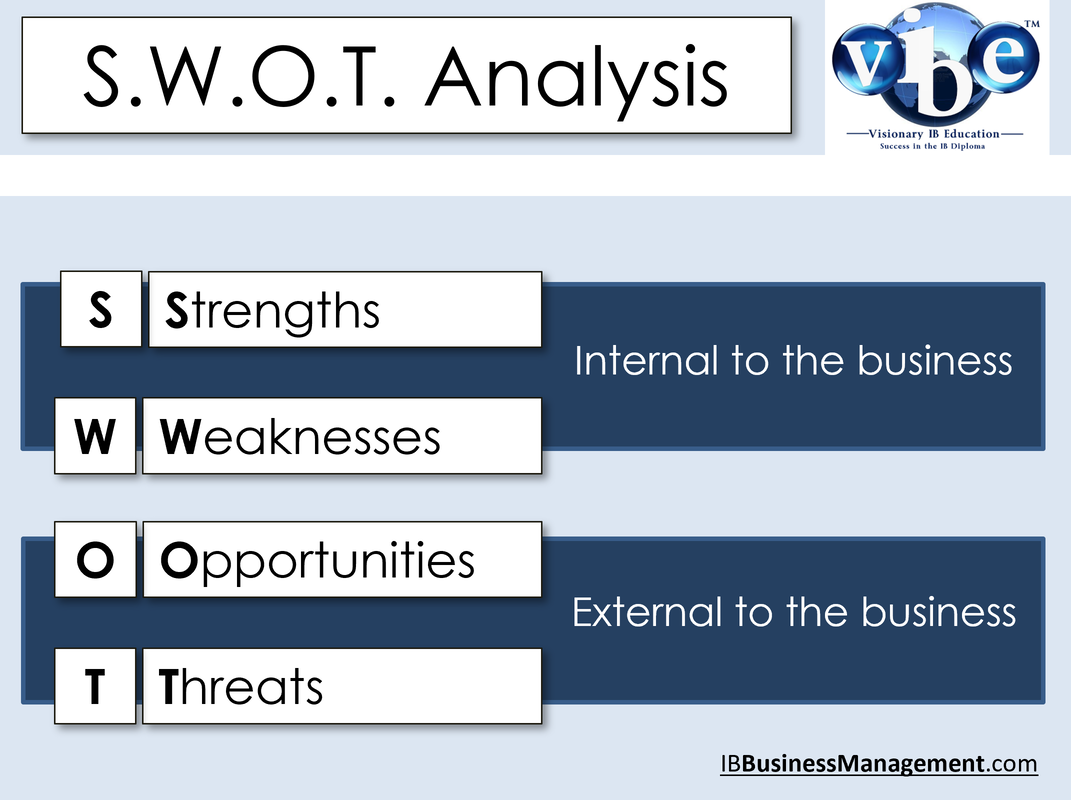|
IB Business Management:
6.1 SWOT analysis A SWOT analysis is a strategic planning tool used to identify and evaluate the internal Strengths, and Weaknesses, and external Opportunities, and Threats involved in a project, business venture, or in a business as a whole. It is a framework used to assess a company's competitive position and to develop strategic planning.
|
|
IB Business Management Toolkit
|
An example SWOT analysis for the Paper 1 case study
Your browser does not support viewing this document. Click here to download the document.
SWOT analysis explainedExample SWOT analysis: Tesla |
IB Business Management 6.1 SWOT analysis
SUMMARY NOTES
IB Business Management toolkit: 6.1 SWOT analysis teaching and learning PowerPoint notes for HL and SL IB Business Management
PROGRESS CHECK – Test your understanding by completing the activities below
You have a range of practice activities, interactive flash cards, exam practice questions, interactive quizzes and classroom games to ensure you and your students have complete mastery of the IB Business Management requirements for the 1.1 Introduction to business topic.
USE THE FLASHCARDS IN ALL STUDY MODES
|
IB Business Management
6.1 SWOT analysis Student learning activity A
Your browser does not support viewing this document. Click here to download the document.
|
IB Business Management
6.1 SWOT analysis Student learning activity B
Your browser does not support viewing this document. Click here to download the document.
|
|
IB Business Management
6.1 SWOT analysis Exam practice questions I
Your browser does not support viewing this document. Click here to download the document.
|
IB Business Management
6.1 SWOT analysis Exam practice questions II
Your browser does not support viewing this document. Click here to download the document.
|
IB Business Management interactive quizzes and classroom games
Test how well you know the IB Business Management toolkit 6.1 SWOT analysis topic with the interactive self-assessment quizzes below. Each interactive quiz selects 30 questions at random from a larger question bank so keep on practicing! Aim for a score of at least 80 percent.























